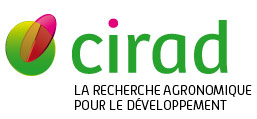Meiosis and sexual fertility of autotetraploid clones of greater yam Dioscorea alata L.
Abraham K., NÃĐmorin A., Lebot V., Arnau G.. 2013. Genetic Resources and Crop Evolution, 60 (3) : p. 819-823.
Meiosis in the tetraploid (2n = 80) males of Dioscorea alata L. was investigated for the first time. During metaphase I, the chromosomes were associated mostly in 6-8 quadrivalents and the remaining ones as bivalents with no trivalents or univalents. Anaphase I and subsequent stages of meiosis were normal. The observation of quadrivalents in the tetraploids provides cytological evidence for autotetraploidy. The autotetraploid males and females were highly fertile and they produced viable seeds on artificial pollination. Pollination between diploids (2n = 40) and tetraploids (2n = 80) were also successful via embryo rescue, producing triploid (2n = 60) progenies. The discovery of fertile autotetraploids could initiate polyploidy breeding in D. alata by conventional hybridization for the first time. The reduced number of quadrivalents and the high fertility of the autotetraploids are thought to be the result of partial diploidization of meiosis. The findings also refute the assumption of the allopolyploid origin of D. alata from two putative progenitors.
Mots-clÃĐs : dioscorea alata; tÃĐtraploÃŊdie; mÃĐiose; appariement chromosomique; chromosome; nombre chromosomique; fertilitÃĐ; clone; amÃĐlioration des plantes; collection de matÃĐriel gÃĐnÃĐtique; germoplasme; guadeloupe; france; autotÃĐtraploÃŊde
Documents associÃĐs
Article (a-revue à facteur d'impact)
Agents Cirad, auteurs de cette publication :
- Arnau Gemma — Bios / UMR AGAP
- Lebot Vincent — Bios / UMR AGAP
